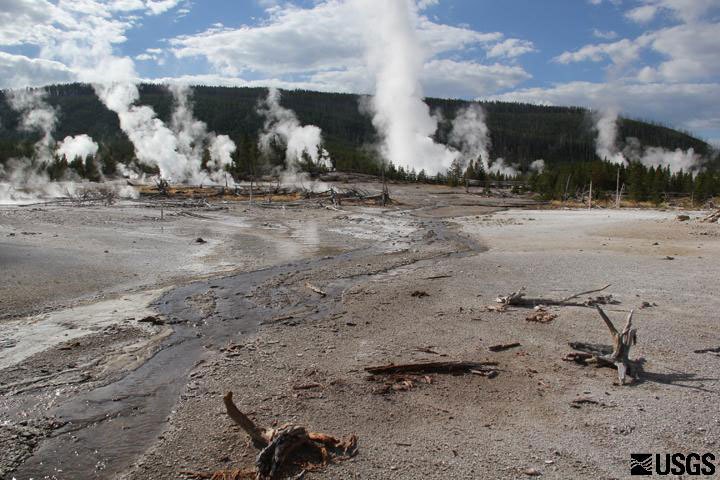HELENA, Mon. – The hot molten rock beneath Yellowstone National Park is two-and-a-half times larger than previously estimated, meaning the park’s supervolcano has the potential to erupt with a force about 2,000 times the size of Mount St. Helens, according to a new study.

By measuring seismic waves from earthquakes, scientists were able to map the magma chamber underneath the Yellowstone caldera as 88.5 kilometres long, lead author Jamie Farrell of the University of Utah said Monday.
The chamber is 29 km wide and runs at depths from five to 14 1/2 km below the earth, he added.
READ MORE: Volcano raises new island far south of Japan
That means there is enough volcanic material below the surface to match the largest of the supervolcano’s three eruptions over the last 2.1 million years, Farrell said.
The largest blast — the volcano’s first — was 2,000 times the size of the 1980 eruption of Mount St. Helens in Washington state. A similar one would spew large amounts of volcanic material in the atmosphere, where it would circle the earth, he said.
- Ontario First Nation declares state of emergency amid skyrocketing benzene levels
- ‘Sciatica was gone’: hospital performs robot-assisted spinal surgery in Canadian first
- Do Canadians have an appetite for electric vehicles? Experts are divided
- After raising a stink, trash cans to return to Montreal’s Lachine Canal
“It would be a global event,” Farrell said. “There would be a lot of destruction and a lot of impacts around the globe.”
The last Yellowstone eruption happened 640,000 years ago, according to the U.S. Geological Survey. For years, observers tracking earthquake swarms under Yellowstone have warned the caldera is overdue to erupt.
Farrell dismissed that notion, saying there isn’t enough data to estimate the timing of the next eruption.
“We do believe there will be another eruption; we just don’t know when,” he said.
READ MORE: Supervolcanoes may have once existed on Mars
There are enough instruments monitoring the seismic activity of Yellowstone that scientists would likely know well ahead of time if there was unusual activity happening and magma was moving to the surface, Farrell said.
The USGS’ Yellowstone Volcano Observatory listed the park’s volcano alert level as “normal” for December.
Yellowstone attracts millions of visitors with its geothermal features of geysers, hot springs and bubbling mud pots. The park just opened its gates on Sunday for its winter season.
Park officials did not immediately return a call for comment.
A large earthquake at Yellowstone is much more likely than a volcano eruption, Farrell said.
The 7.5-magnitude Hebgen Lake earthquake killed 28 people there in 1959.
Farrell presented his findings last week to the American Geophysical Union. He said he is submitting it to a scholarly journal for peer review and publication.
Brigham Young University geology professor Eric Christiansen said the study by Farrell and University of Utah Professor Bob Smith is very important to understanding the evolution of large volcanos such as Yellowstone’s.
“It helps us understand the active system,” Christiansen said. “It’s not at the point where we need to worry about an imminent eruption, but every piece of information we have will prepare us for that eventuality.”


Comments